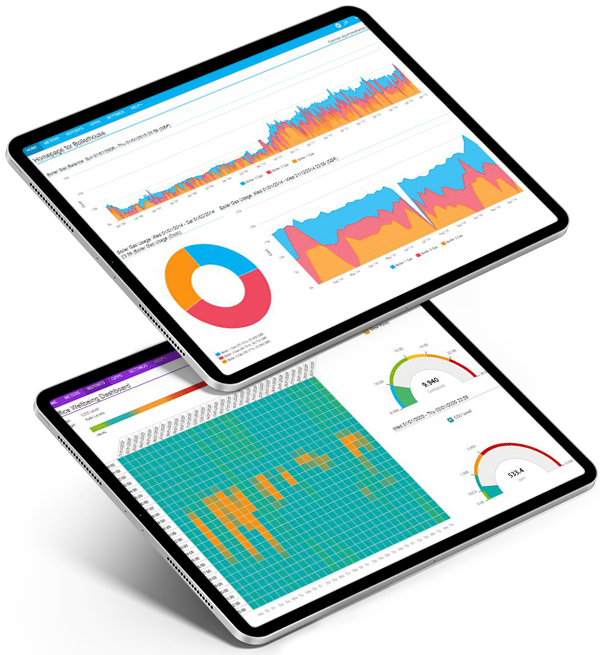Investors are increasingly engaging with companies to address some of the risks associated with climate change. Extreme weather events, carbon-intensive assets and greenhouse gas emissions are becoming part of a routine risk assessment on the impact of a company’s profitability. Reducing carbon footprint and driving down greenhouse gas emissions in the workplace is now a priority.
Rising energy costs are having an impact across the supply chain, squeezing profit margins and making it crucial for companies to find savings.
A company’s energy usage can have a significant impact on its profitability. High energy usage can damage its environmental credentials, making it less attractive both for investors and consumers. Reducing carbon footprint and cutting greenhouse gas emissions should be a priority.
Energy efficiency and productivity have traditionally been difficult to assess, not only for stakeholders but also for company management. Even if a company wants to reduce its carbon footprint and become more sustainable, a lack of tools to measure and assess energy use has made it problematic.
Key elements such as the energy performance of equipment like refrigeration systems, ovens, conveyors, wastewater systems and other heavy machinery can be difficult to measure and track. In some cases, the poor performance of a single piece of energy intensive equipment can undermine the reduction strategy of the entire organisation. Having the right tools to monitor usage and make necessary adjustments can make all the difference.
The next generation of energy management software is now giving companies the high-quality real-time data and reporting capabilities they need to make a difference. Combined with other activities, this can help businesses make the necessary impact on reducing their carbon footprint.
How can companies reduce their energy usage and what are some of the most commonly used strategies?
How to reduce carbon footprint at work
According to the Energy Trust, the average small and medium-sized enterprise (SME) could reduce energy bills by 18-25% by installing energy efficiency measures and implementing behavioural change.
Some of the most effective strategies for reducing carbon footprint in the workplace include:
Improving energy efficiency
One of the most common methods for reducing energy consumption and carbon footprint is to implement energy efficiency measures across your organisation.
Replacing old, inefficient equipment with more energy-efficient alternatives can significantly reduce energy consumption. Implementing building management systems (BMS) can help companies optimise their energy use. Energy audits can assist companies identify areas where they may be able to improve energy efficiency. Companies can also use smart technologies, such as smart lighting and smart plugs, to reduce energy consumption.
Behavioural change
Any drive to increase energy efficiency and commitment to reducing carbon footprint in the workplace requires employee engagement. Training to help employees understand energy usage and to adopt more energy-efficient behaviours can change the workplace culture over time.
Renewable energy
Reducing carbon footprint through renewable energy is an effective and potentially profitable option. As well as ensuring that the company is purchasing energy from renewable sources, it’s often possible to install renewable energy generation on company buildings. In most cases, this will be solar technology, but in some cases, wind and even hydroelectric generation may be possible.
Companies that adopt renewable energy often find that they are better positioned to meet new energy regulations and sustainability goals and may benefit from financial incentives and tax credits.
Supply chain management
Companies can use supply chain management to reduce their carbon footprint by making changes to their sourcing, production, and delivery processes.
Companies can source materials from suppliers that have a demonstrated commitment to sustainability and prioritise materials that have a lower carbon footprint. For example, companies can use recycled materials, sustainably grown timber, or low-carbon concrete.
Companies can adopt green procurement policies that prioritise the purchase of products and services that have a lower carbon footprint. By optimising their logistics processes, companies can reduce emissions from transportation. Implementing green supply chain management practices, such as opting for recyclable materials and reducing packaging waste can also make a difference.
As well as implementing more sustainable production practices in their own workplaces, companies can engage with their suppliers to encourage them to reduce their carbon footprint.
Energy Monitoring Software
Energy monitoring software can help your business reduce energy costs while meeting ambitious environmental targets. It can help companies cut their greenhouse gas emissions by accordingly providing them with valuable insights into their energy usage and allowing them to monitor and control their energy consumption in real time.
Energy monitoring software can track energy usage across all the facilities of a company. This provides accurate and up-to-date data on energy consumption. This data can then be used to identify areas of inefficiency and opportunities for energy savings.
It can provide valuable information about the performance of energy intensive equipment such as ovens, fridges, conveyors, compressors, wastewater systems and pumps where small changes in energy usage can have a significant impact.
Energy monitoring software plays a critical role in an effective company sustainability ecosystem. It provides the necessary tools and data-rich insights that can support change and encourage best practices. Crucially, it provides the necessary data on the return on investment of energy-saving initiatives. This will allow companies to make informed decisions about capital expenditures related to energy efficiency.
Carbon Desktop gives you the tools you need to meet your energy reduction goals
Carbon Desktop is the ultimate energy monitoring software for ambitious businesses.
It helps you:
- Track your energy use across utilities.
- Find efficiency savings.
- Develop and implement new strategies to reduce energy usage and track their progress.
- It allows you to see in real-time, the cost-savings you are making across your business and meet your energy reduction goals.
Our hands-on approach assures that you are never alone in the process. We will be with you every step of the way to help you optimise your energy savings. We are proud of the strong, long-term relationships we build with our clients and you can rely on our guidance whenever you need it.
Our ‘out-of-the-box’ solution comes with the support and experience of Verco, a leading sustainability and energy company.
Want to find out more? Book your free demonstration today.





